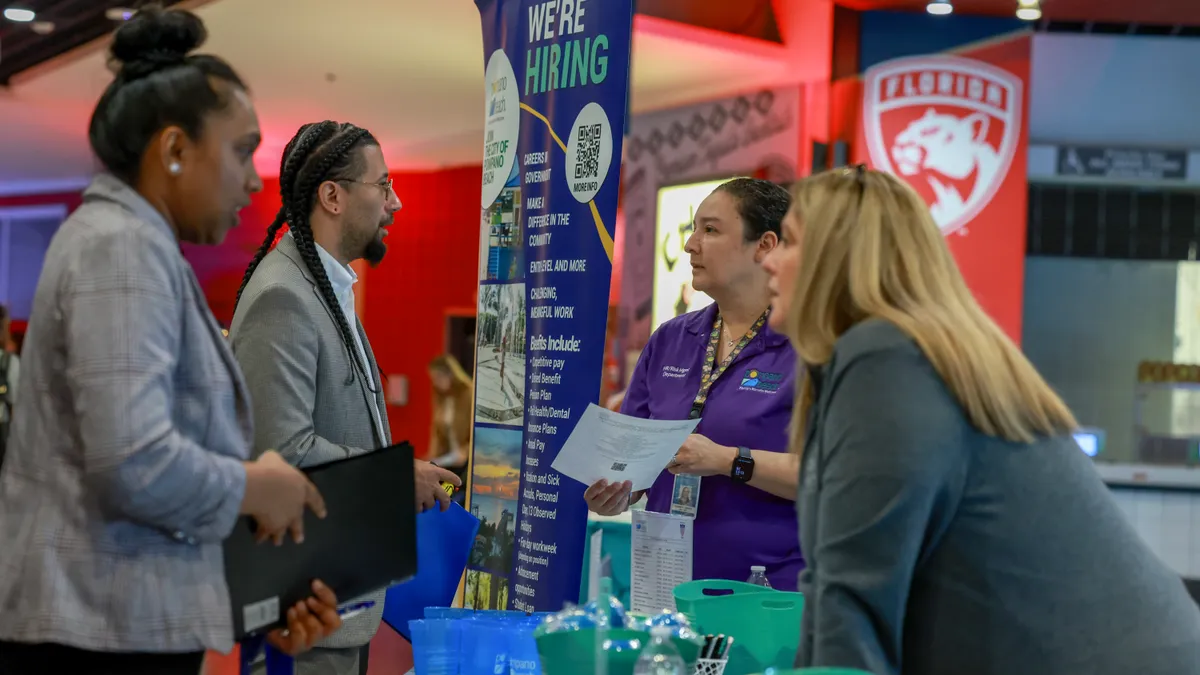Leslie Brunner is chief people officer at Devoted Health.
There’s a common complaint from the leaders of mission-driven organizations: They founded a company around a purpose and a cause, but feel it’s hard to find talented colleagues who believe in that cause as much as they do.
How do mission-driven companies identify that kind of talent, and how do they make sure they stay? And how do you attract and retain that talent while rapidly scaling?
It’s a challenge our company has wrestled with, as well. We launched Devoted Health — an all-in-one health care company — in 2017 with a commitment to treat every member the way we would treat our own family. From that very committed founding team that could fit in a minivan, we are now providing health care services and insurance to more than 200,000 seniors across 13 states.
We employ more than 2,000 people from nurses to software engineers to customer service reps, and my team is on track to hire more than 1,000 people this year alone. For many high-growth companies, it’s at this point that they usually find it hard to fill roles with people committed to the mission. So far, we have not had that problem.
We have managed to cut the turnover in our most customer-facing roles by half and have found motivated, passionate talent to fill our roles through a combination of concrete tactics that rely on answering three key questions.
First, what’s the one key trait that is foundational to reaching your mission?
Your mission may be broad and transformational. It might be complex and nuanced. But to start finding the right talent to advance that mission, you need to distill it down to a single, key trait.
For example, to fulfill our mission of caring for someone like they’re family, you need to understand them like family. That starts with deep listening.
Your organization’s key trait could be different. Maybe it’s curiosity, grit or resilience. But whatever trait you identify, you have to find it in every new employee. That means, tactically, that you need to incorporate that key trait in your interview process for every single position — from customer-facing, front-line staff to the software engineers plugging away on code late into the night. You need to know that every member of your team can bring that key trait to the table.
Second, do you engage the heart before the head?
All too often, the hiring process devolves into a box-checking exercise, where employers coldly scan a candidate’s resume for the latest certifications or experience. At a mission-driven company, this approach to hiring isn’t just counterproductive, it’s toxic. You have to find the person beneath the lines of their resume. Good mission-driven organizations realize this, but the great ones operationalize it.
One way to start is by casting a wide net for talent. At Devoted, for example, we purposely look at a wide variety of candidates for each role; we don’t dismiss candidates out of hand who have nontraditional experience.
Perhaps an applicant for one of our customer-facing “guide” positions doesn’t have a resume brimming with healthcare experience. But we see that his two years as a bartender hint at his ability to actively listen to our members and empathize with them. When we bring him in for an interview, we learn that his grandmother’s struggle with healthcare at the end of her life motivated him to find a healthcare company that is committed to making sure fewer families have to suffer like his. For us, he’s a strong candidate, and not one we would have found if our initial screening was focused on more narrow metrics or qualifications.
Third, how does your mission relate to your candidate’s lived experience?
A major shift in human resources over the past few decades has been changing the focus from a candidate’s experience to focusing on scenarios. These can be both hypothetical scenarios set up to mimic a situation they could face in their new role and actual scenarios from their past that reveal something about their approach and thought process.
But in a scenario, an interviewer is looking for how a candidate would think and react. In a story, we’re trying to find out how a candidate feels.
We want to know if they are full of life when they talk about customers they’ve served in the past. We want to know if they shoulder the blame or pass it off to other colleagues or departments. We want to hear empathy and compassion in their stories, and we want to know that comes naturally for them. When things don’t work out, we want to know they have a recovery process in place so they can work through their feelings in a healthy way. And ultimately, we want to see them build relationships with our interviewees every time we’re on the phone with them, just like they would with our members.
Finding and keeping good talent in a mission-driven company is hard work, and there are no shortcuts. But by identifying your mission’s key trait, engaging the heart before the head and using stories to illuminate the connection between your mission and your candidate’s lived experience, any organization can increase the odds they’ll create a team motivated by a shared mission and built to last.



















